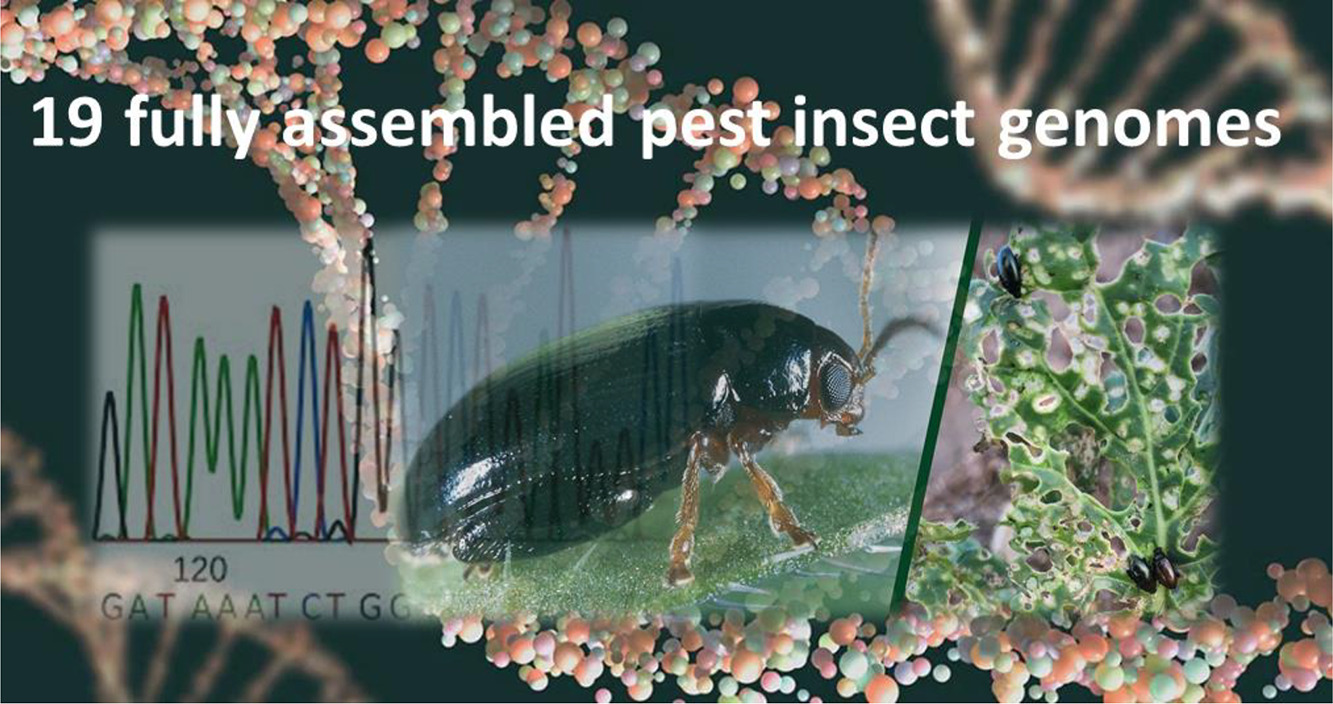We use cookies to understand how you use our site and to improve the overall user experience. This includes personalizing content and advertising. Read our Privacy Policy


We are dedicated to providing outstanding customer service and being reachable at all times.
Long Read Sequencing for Pest and Disease Research
There are many pests worldwide that damage crops and reduce yields by feeding directly or transmitting plant diseases. Pest management has been difficult because scientists have a limited understanding of their biology. Genome sequencing can provide stakeholders with a deeper understanding of insect biology. CD Genomics is a leading company with extensive experience in genomics research and is committed to providing long read sequencing solutions for pest and disease research.
Introduction to Pest and Disease Research
Pests and diseases are responsible for 20-40% of global crop losses. For pests, there is a dual impact, direct damage caused by feeding on or weakening crops, and indirect damage through pathogen transmission. Damage caused by pests is predicted to increase as the climate warms. Currently, crop pest control relies heavily on the use of insecticides, but this is often hampered by legislation banning the use of insecticides due to concerns about the impact on non-target pests and the evolution of resistance in target pests. There is therefore a need to develop new insecticides with improved pest selectivity, to overcome pre-existing resistance mechanisms, and to develop new and more benign forms of pest control. The complexity of genetics within these pest populations is one of the many challenges facing researchers and field scientists studying invasive species and agricultural pests. All of these goals can be supported by the availability of pest genomes. Long-read sequencing has emerged as a convenient tool to provide complete genome assemblies for a wide range of pests of global agricultural importance.
 Fig. 1. The complete genome assemblies of 19 insect pests of worldwide importance to agriculture. (King et al., 2023)
Fig. 1. The complete genome assemblies of 19 insect pests of worldwide importance to agriculture. (King et al., 2023)
Solutions Offering at CD Genomics
CD Genomics offers long read sequencing solutions tailored specifically for pest research. Our PacBio SMRT sequencing and ONT Nanopore sequencing can capture genomic diversity within insect, fungal, and microbial populations with extreme precision. Researchers can even develop low-cost, high-quality reference genomes from individual insect specimens of various sizes. We aim to help you find new genes responsible for immunity, metabolic detoxification, and insecticide resistance in insects, fungi, and microbes.
We enable comprehensive analysis of genomes of a wide range of pests, including Agriotes lineatus (click beetle/wireworm), Aphis gossypii (melon/cotton aphid), Bemisia tabaci (cotton whitefly), Brassicogethes aeneus (pollen beetle), Ceutorhynchus obstrictus (seedpod weevil), Chilo suppressalis (striped rice stem borer), Chrysodeixis includens (soybean looper), Diabrotica balteata (cucumber beetle), Diatraea saccharalis (sugar cane borer), Nezara viridula (green stink bug), Nilaparvata lugens (brown plant hopper), Phaedon cochleariae (mustard beetle), Phyllotreta striolata (striped flea beetle), Psylliodes chrysocephala (cabbage stem flea beetle), Spodoptera exigua (beet army worm), Spodoptera littoralis (cotton leaf worm), Diabrotica virgifera (western corn root worm), Euschistus heros (brown stink bug) and Phyllotreta cruciferae (crucifer flea beetle), etc .
Advantages of Our Long Read Sequencing Solutions for Pest and Disease Research
- Complete Genome Assembly of Pests
Long read sequencing generates high-quality reference genomes of pests. By understanding the genetic makeup of pests at the molecular level, researchers can develop innovative strategies for pest control, including the identification of genetic markers associated with pest resistance or susceptibility.
- Analysis of Pest Resistance and Adaptation Genetic Mechanisms
Long read sequencing enables researchers to study the genetic basis of pest resistance and adaptation. By analyzing pest genomes and transcriptomes, researchers can identify genetic variation, selective splicing events, and regulatory elements that contribute to pest resistance.
- Pest Biology and Evolutionary Analysis
Long read sequencing provides information on genetic variation within and among pest populations, allowing researchers to reveal the evolutionary history, population dynamics, and migration patterns of pests. This information is critical to understanding the spread of invasive species, predicting the emergence of new pest threats, and designing effective pest management strategies.
- Sustainable Pest Management
Information gained from long read sequencing can help develop environmentally sustainable pest management practices. By gaining a deeper understanding of pest genetics, researchers can design targeted control methods that minimize the use of harmful pesticides while maximizing the impact on pests.
Applications of Our Long Read Sequencing Solutions for Pest and Disease Research
- Identifying mutations in pesticide target sites that lead to resistance and elucidate how pesticides interact with proteins.
- Identifying differences in proteins at target sites may allow the design of selective chemistries.
- Identification of detoxifying enzymes that confer selectivity through differential metabolism in different species.
- Understanding the regulation of detoxification genes (cis and trans)
- Understanding the basis of insect adaptation to the host.
- Elucidating the link between host plant adaptation and pesticide resistance.
With the benefits of long read sequencing, researchers can develop more targeted and effective pest control strategies, ultimately contributing to sustainable agriculture and global food security. CD Genomics is committed to providing long read sequencing solutions to help you unravel the molecular mechanisms of pest resistance, adaptation, and biology. If you have any questions, please feel free to contact us. We look forward to working with you on projects of interest.
Reference
- King, Rob, et al. "The complete genome assemblies of 19 insect pests of worldwide importance to agriculture." Pesticide Biochemistry and Physiology. 191 (2023): 105339.
Related Services
PacBio SMRT Sequencing
Oxford Nanopore Sequencing
Animal and Plant Genomics with Long-Read Sequencing
Animal/Plant Whole Genome De Novo Sequencing
Animal/Plant Whole Genome Sequencing
For research purposes only, not intended for personal diagnosis, clinical testing, or health assessment